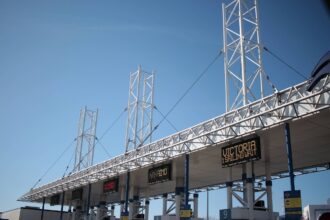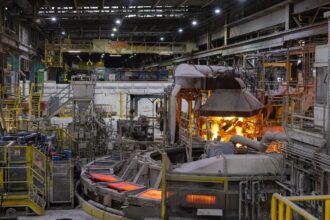In a strategic move that could reshape North America’s battery manufacturing landscape, a major industry player is eyeing the acquisition of a battery production facility in Quebec, positioning Canada as a potential powerhouse in the growing electric vehicle supply chain. The unnamed US-based company is reportedly in advanced negotiations to purchase existing infrastructure rather than building from scratch—a development that industry analysts suggest could accelerate Canada’s position in the competitive battery production market.
“This potential acquisition represents more than just a business transaction,” said Jean Tremblay, senior economic analyst at the Montreal Economic Institute. “It signals growing confidence in Quebec’s industrial capabilities and its abundant clean energy resources that are critical for sustainable battery production.”
The move comes amid increasing pressure on North American manufacturers to establish domestic battery supply chains, reducing dependence on Asian manufacturers who currently dominate the global market. Quebec’s hydroelectric resources make it particularly attractive for battery production, which requires substantial energy input but benefits from using renewable sources to maintain environmental credentials.
Provincial officials have expressed cautious optimism about the potential deal. “While we cannot comment on specific negotiations, Quebec has been strategically positioning itself as a battery production hub through targeted incentives and infrastructure development,” noted a spokesperson from Quebec’s Ministry of Economy and Innovation when reached for comment.
The battery sector has become increasingly competitive as automotive manufacturers race to secure reliable supply chains for electric vehicle production. Recent federal initiatives, including significant tax incentives for clean technology manufacturing under both Canadian and American legislation, have created a favorable environment for such investments across North America.
Industry observers point to Quebec’s established mining sector—particularly its lithium, nickel, and graphite deposits—as another compelling factor in this potential acquisition. These critical minerals form the backbone of modern battery technology and having production facilities near raw material sources offers significant logistical and cost advantages.
“What we’re potentially seeing is the creation of a vertically integrated battery ecosystem in eastern Canada,” explained Dr. Sarah Williams, technology analyst at the Canadian Energy Research Institute. “From mining the raw materials to producing the finished batteries—all within a relatively compact geographic region powered by clean energy.”
The unnamed company is reportedly considering retooling an existing manufacturing facility, potentially preserving jobs while transitioning workers to new production methods. Labor representatives have indicated that discussions regarding workforce training and transition programs are already underway, though formal announcements await the finalization of the acquisition.
Financial details remain closely guarded, but market analysts estimate the investment could exceed $500 million when accounting for facility acquisition and necessary modernization. Government support through various incentive programs would likely supplement the private investment.
If completed, this acquisition would represent one of several recent investments in Canada’s emerging battery production sector, including Northvolt’s planned facility and other projects across Ontario and Quebec. Together, these developments suggest a significant shift in North America’s industrial strategy as the continent races to establish supply chain independence in critical clean technology sectors.
As global competition for battery manufacturing capability intensifies, will Canada successfully leverage its natural advantages to become a leader in this critical industry, or will challenges in scaling production and competing with established Asian manufacturers prove insurmountable? The answer may well determine the future of North America’s electric vehicle revolution.


















